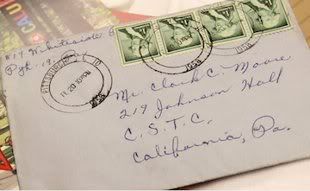
53-year-old love letter finally on way to intended recipient
Since a love letter was written to Clark C. Moore 53 years ago, he has married twice, fathered 21 children, retired as a teacher, converted to Islam and become a Muslim cleric.
In fact, the letter--addressed to Moore when he was a student at Pennsylvania's California University--should now be addressed to Muhammad Siddeeq, as he changed his name years ago when he converted to Islam, the Pittsburg Tribune-Review's Jason Cato writes.
A university mail worker found the opened love letter only last week. It was signed by "Vonnie" and said "I still miss you as much as ever and love you a thousand times more," according to Reuters. Vonnie asked why the object of her affection hadn't called her before he went back to college, but signed the note "Love Forever." National news outlets publicized the discovery, and a Pittsburgh friend recognized Siddeeq's former name and contacted him, according to the Observer-Reporter.
The 74-year-old now lives in Indianapolis and is waiting with mixed emotions for the letter to arrive in his mailbox.
"I'm curious, but I'm not sure I'd put it under the category of 'looking forward to it,'" he told the Tribune-Review.
He and Vonnie married later that year, in 1958, and had four children before divorcing. Vonnie, reached by the paper, said she was upset the letter had been released and did not want her last name known. The couple no longer speak.
Siddeeq told the Observer-Reporter that the romantic piece of mail is "just a testament of the sincerity, interest and innocence of that time."



















